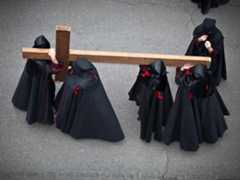Ecumenical Patriarchate of Constantinople
Our editors will review what you’ve submitted and determine whether to revise the article.
Ecumenical Patriarchate of Constantinople, honorary primacy of theEastern Orthodox autocephalous, or ecclesiastically independent, churches; it is also known as the “ecumenical patriarchate,” or “Roman” patriarchate (Turkish:Rum patriarkhanesi).
According to alegend of the late 4th century, the bishopric of Byzantium was founded bySt. Andrew, and hisdisciple Stachys became the first bishop (ad 38–54). Soon afterConstantine the Great transferred the capital of the Roman Empire fromRome toByzantium (330), renamed Constantinople and New Rome, its bishopric was elevated to an archbishopric. Themetropolitan of Heraclea Perinthus, to whom Byzantium had formerly been subject, now came under the jurisdiction of Constantinople. In 381 the firstCouncil of Constantinople recognized that the bishop of Constantinople, “being now the New Rome,” had rights equal to those of thebishop of Rome. TheCouncil of Chalcedon (451) ratified this and assigned to his jurisdiction a large area in the Balkans andAsia Minor. In the 6th century the official title of the bishop became “archbishop of Constantinople, New Rome, andecumenicalpatriarch.” The successful territorial conquests of the Muslims begun in the 7th century helped augment the spiritual power of the ecumenical patriarchate; Eastern patriarchs of conquered sees were often forced into exile in the capital, where their successors over a long period were selected by the ecumenical patriarch.
From Constantinople,Byzantine OrthodoxChristianity spread to most of Eastern Europe,i.e., Bulgaria, Serbia, Romania, andRussia. As a leader of Eastern Christianity, the patriarch of Constantinople represented a clear challenge to the universalist claims of Rome. In 867 Patriarch Photius accused PopeNicholas I of usurpation in Bulgaria, but a reconciliation took place with Nicholas’ successor, John VIII, in 879–880. Another confrontation between the two churches occurred in 1054, and not until 1964 did the ecumenical patriarch (then Athenagoras I) and thepope (Paul VI) embrace.

After the capture of Constantinople by the Latins in the Fourth Crusade (1204), the ecumenical patriarchate was transferred to Nicaea (1206), but Emperor Michael VIII Paleologus restored it to Constantinople when he retook the city in 1261. When the city fell to the Turks in 1453, becoming the capital of the MuslimOttoman Empire, the Ottoman government recognized the ecumenical patriarch Gennadius II as the ethnarch of the conquered Orthodox peoples, with increased authority over the territories of the Eastern patriarchates and over the Balkan countries, as well as farther afield.
This power began a long decline whenJeremias II declared the patriarchate of Moscow autocephalous (1593); national churches in Greece (1833), Romania (1865), Serbia (1879), Bulgaria (1870), andAlbania (1937) became in their turn autocephalous. The number of dioceses subject to Constantinople was further reduced in 1922, when about 1,500,000 Greek inhabitants of Asia Minor andThrace were driven across the Aegean by the Turks, leaving few Christians in Asia Minor.
The territory directly subject to the patriarch and hissynod inTurkey is confined to the archdiocese of Constantinople itself, with four suburban dioceses of Chalcedon, Terkos, Büyükada, and the islands ofGökçeada and Bozcaada. InGreece the patriarch still hasnominal jurisdiction over the monastic state of Mt. Athos, the monastery ofSt. John the Evangelist onPátmos, several dioceses in northern Greece, four bishoprics in theDodecanese, and theautonomous church ofCrete. Greek archbishoprics and metropolitanates of Europe, North andSouth America, Australia and New Zealand, as well as the autonomous church ofFinland, are also dependent on the patriarch of Constantinople.
- Related Topics:
- patriarch
Since 1586 the patriarchate has been located in the Phanar, the northern section of Istanbul (formerly Constantinople), having lost both its cathedral ofHagia Sophia and its historic quarter to the Muslims. The small church ofSt. George serves as the cathedral for the patriarch, who must be a native Turkish citizen elected by the synod of metropolitans. The Turkish government considers the patriarchate as serving the religious needs of Greeks in Istanbul only.Tension between Greece and Turkey over Cyprus has made the position of the patriarchate in Turkey uneasy.


